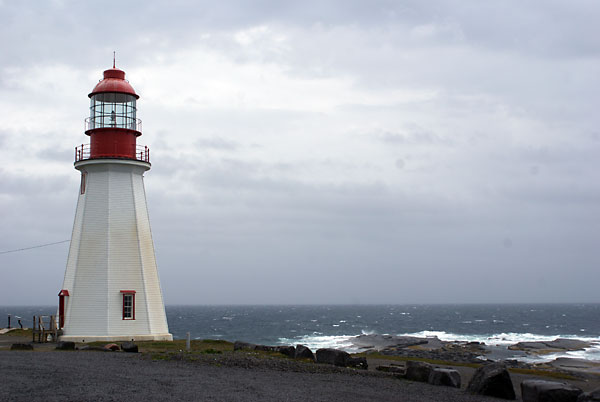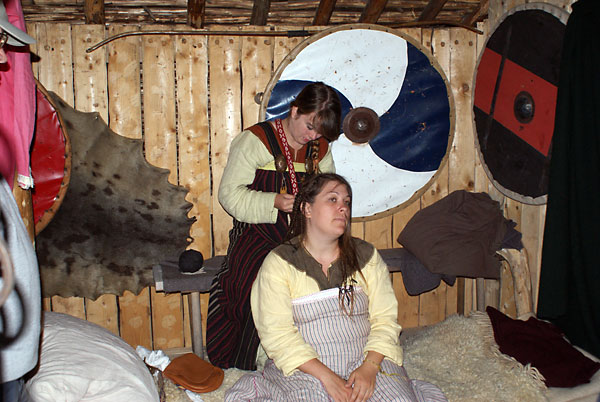
Inside the sod buildings were docents dressed in costumes from the Viking era and playing the role of Norse people in the Viking settlement.
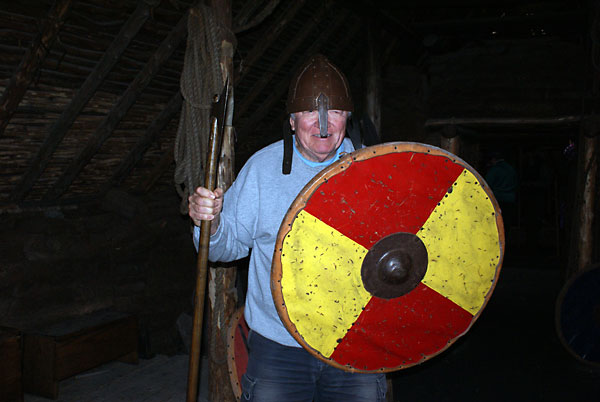
Ed, wearing a Viking helmet and carrying a shield and axe, is playing the role of a Viking warrior. He looks pretty fearsome to me.

A few miles away is Norstead, a commercial re-enactment of a Viking settlement.
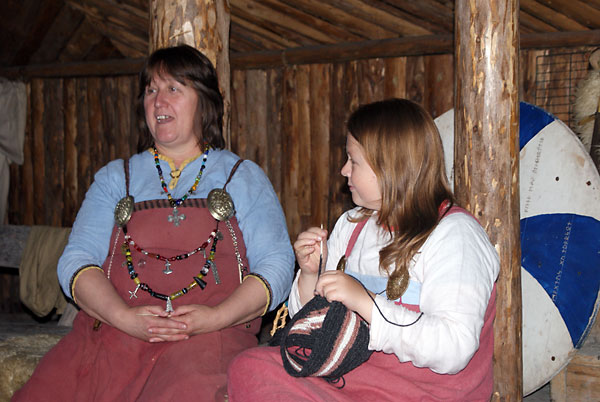
A couple of the docents at Norstead playing the role of Viking women.
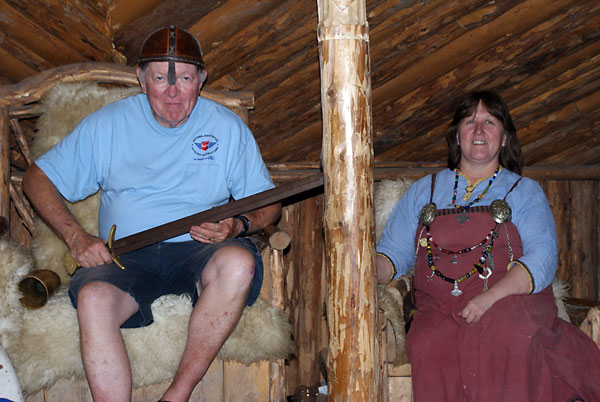
Ed sitting in the chieftain's chair with his Viking "wife" beside him, but at a lower level.
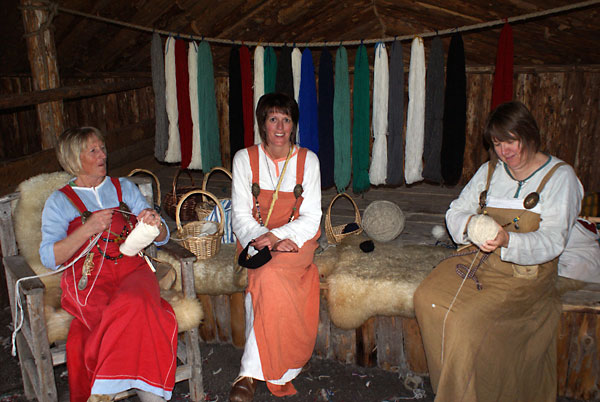
These Viking women were engaged in making yarn, weaving, and sewing, according to Viking customs and styles of the era.
Next stop: Labrador
